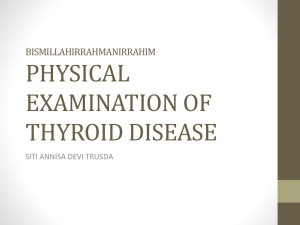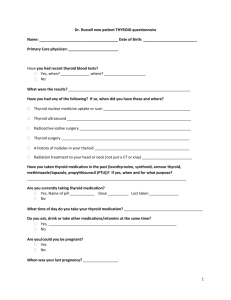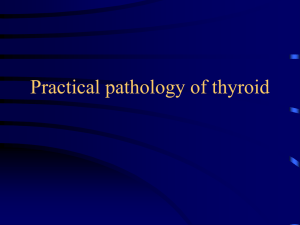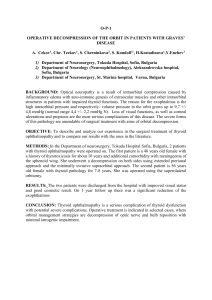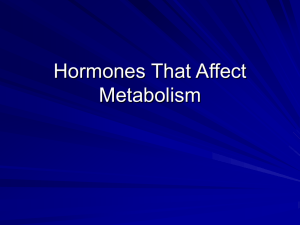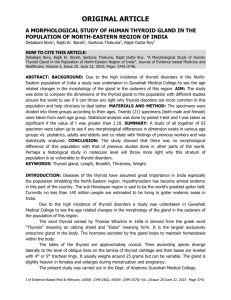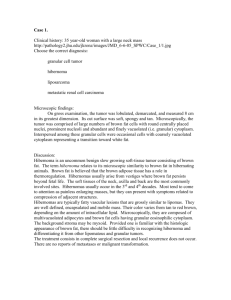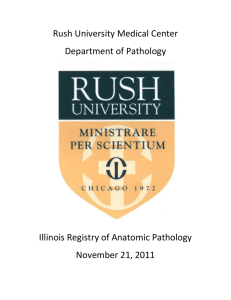AdvMT_Ch20Pract.Applic
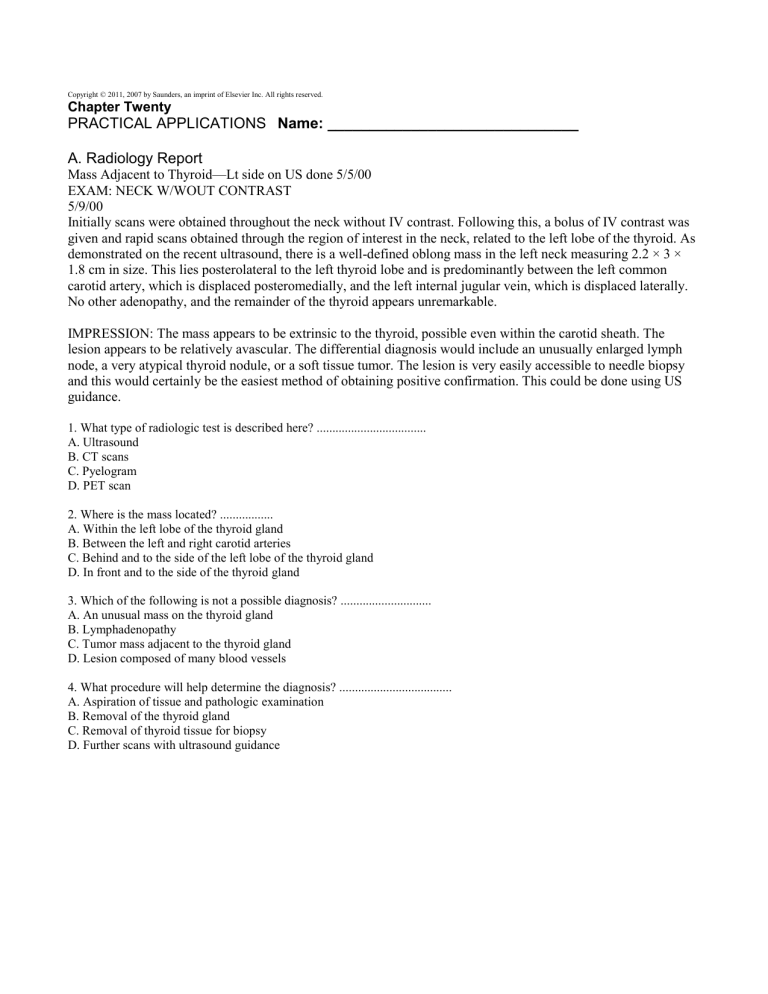
Copyright © 2011, 2007 by Saunders, an imprint of Elsevier Inc. All rights reserved.
Chapter Twenty
PRACTICAL APPLICATIONS Name: ______________________________
A. Radiology Report
Mass Adjacent to Thyroid—Lt side on US done 5/5/00
EXAM: NECK W/WOUT CONTRAST
5/9/00
Initially scans were obtained throughout the neck without IV contrast. Following this, a bolus of IV contrast was given and rapid scans obtained through the region of interest in the neck, related to the left lobe of the thyroid. As demonstrated on the recent ultrasound, there is a well-defined oblong mass in the left neck measuring 2.2 × 3 ×
1.8 cm in size. This lies posterolateral to the left thyroid lobe and is predominantly between the left common carotid artery, which is displaced posteromedially, and the left internal jugular vein, which is displaced laterally.
No other adenopathy, and the remainder of the thyroid appears unremarkable.
IMPRESSION: The mass appears to be extrinsic to the thyroid, possible even within the carotid sheath. The lesion appears to be relatively avascular. The differential diagnosis would include an unusually enlarged lymph node, a very atypical thyroid nodule, or a soft tissue tumor. The lesion is very easily accessible to needle biopsy and this would certainly be the easiest method of obtaining positive confirmation. This could be done using US guidance.
1. What type of radiologic test is described here? ...................................
A. Ultrasound
B. CT scans
C. Pyelogram
D. PET scan
2. Where is the mass located? .................
A. Within the left lobe of the thyroid gland
B. Between the left and right carotid arteries
C. Behind and to the side of the left lobe of the thyroid gland
D. In front and to the side of the thyroid gland
3. Which of the following is not a possible diagnosis? .............................
A. An unusual mass on the thyroid gland
B. Lymphadenopathy
C. Tumor mass adjacent to the thyroid gland
D. Lesion composed of many blood vessels
4. What procedure will help determine the diagnosis? ....................................
A. Aspiration of tissue and pathologic examination
B. Removal of the thyroid gland
C. Removal of thyroid tissue for biopsy
D. Further scans with ultrasound guidance
B. Chart Note
The pt underwent a bone scan, which revealed irregular foci of tracer in lower T spine (T11-T12) consistent with compression fracture. There was also increased tracer in the posterior/lateral right ribs. On physical exam she was diffusely tender and in pain throughout her chest/ribs and spine. The pt also underwent chest CT, which demonstrated extensive parenchymal and pleural disease encasing the entire chest and involving vessels and bronchi. Her adrenals and liver, vertebral bodies, and R scapula were also involved with metastatic disease.
1. What type of test is a bone scan? .........
A. Chest x-ray of ribs and bones of back
B. MRI of the skeleton
C. Dye is injected and traced in blood vessels
D. Radioisotope is injected and traced in bones
2. What type of doctor administers this test? ............................................
A. Diagnostic radiologist
B. Nuclear medicine specialist
C. Radiation oncologist
D. Medical oncologist
3. Extensive parenchymal and pleural disease means: ...................................
A. Tumor is in the spinal cord
B. Tumor is in the backbones
C. Tumor is in the lungs and membranes around the lungs
D. Tumor is in the abdominal, pelvic, and chest regions
4. The bone scan revealed: ......................
A. Disease in the lungs
B. Areas of tumor in the lower chest region and ribs
C. Disease in the adrenals and liver
D. Metastatic disease in the right shoulder bone
